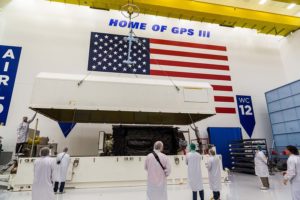
The Space Force’s next national security launch will send the service’s newest GPS satellite up into space aboard a Falcon 9 rocket, while provider Space X will attempt to recover the booster for the first time after a natsec-related launch. The service’s third GPS III satellite is scheduled to launch June 30 from Cape Canaveral Air Force Station, Florida, after a two-month delay from its originally scheduled date. It will be the second time a Falcon 9 carries a GPS…

 By
By 











